The Origins of Religious Violence
The Origins of Religious Violence
An Asian Perspective
Nicholas F. Gier
LEXINGTON BOOKS
Lanham Boulder New York London
Published by Lexington Books
An imprint of The Rowman & Littlefield Publishing Group, Inc.
4501 Forbes Boulevard, Suite 200, Lanham, Maryland 20706
www.rowman.com
16 Carlisle Street, London W1D 3BT, United Kingdom
Copyright 2014 by Lexington Books
All rights reserved. No part of this book may be reproduced in any form or by any electronic or mechanical means, including information storage and retrieval systems, without written permission from the publisher, except by a reviewer who may quote passages in a review.
British Library Cataloguing in Publication Information Available
Library of Congress Cataloging-in-Publication Data
Gier, Nicholas F., 1944 author.
The origins of religious violence : an Asian perspective / Nicholas F. Gier.
p. cm.
Includes bibliographical references and index.
ISBN 978-0-7391-9222-1 (cloth : alk. paper) ISBN 978-0-7391-9223-8 (ebook)
1. ViolenceReligious aspects 2. Religion and civil societyAsia. 3. Social conflictReligious aspects. 4. NationalismReligious aspects. I. Title.
BL65.V55G54 2014
201'.76332095dc23
2014021842
 TM The paper used in this publication meets the minimum requirements of American National Standard for Information Sciences Permanence of Paper for Printed Library Materials, ANSI/NISO Z39.48-1992.
TM The paper used in this publication meets the minimum requirements of American National Standard for Information Sciences Permanence of Paper for Printed Library Materials, ANSI/NISO Z39.48-1992.
Printed in the United States of America
Dedicated to the memory of Boyd A. Martin (19111998)
Founder of the Martin Institute for Peace Studies and Conflict Resolution
University of Idaho, Moscow, Idaho
Acknowledgments
I sometimes describe myself as a comparative philosopher with seven league boots. These are, however, not the magical footwear of world folklore. It would not have taken me twenty-five years to complete this book if they were. Rather, experts in Asian studies have provided me with sturdy boots that have assisted me in at least two ways: (1) they are sufficiently waterproof (accurate) that I can wade safely in the historical, philosophical, and theological waters of many cultures; and (2) they are high enough so they can descend into the sometimes murky depths of cultural complexities and subtleties. Sometimes, however, when I fail to wade cautiously and move into unplumbed waters, water starts pouring over the top of my boots. I am of course fully responsible for the errors that occur when I have gone off the deep end. To the charge that this reliance on so many scholars makes my work derivative, I plead guilty, but I would rather say that generalists such as I, standing on the shoulder of giants and making connections that specialists may have missed, have made significant contributions to understanding how all human beings relate and should treat each other.
The following scholars have allowed me to put on their boots of expertise. For Chinese religion and culture I have benefited from the advice and/or writings of Philip J. Ivanhoe, Thomas H. Reilly, Jonathan D. Spence, and Vincent Y. C. Shih. With regard to Japanese religion and culture I am grateful to Brian D. Victoria, Christopher Ives, James A. Ketelaar, John S. Harding, Christina Naylor, and contributors to the superb volume Rude Awakenings: Zen, the Kyoto School, and the Question of Nationalism. For their expertise in Burma studies I thank Thant Mint-U, Michael Aung-Twin, William J. Koenig, Michael W. Charney, Peter Popham, Michael Fredholm, Martin Smith, and Donald E. Smith. With regard to my new knowledge of Sri Lanka I relied heavily on Peter Shalk, H. L. Seneviratne, Gananath Obeyesekere, and John C. Holt. The experts on Bhutans history and culture whom I consulted were Michael Aris, Nagendra Singh, and Rahul Ram. With regard to Tibetan Buddhism I am grateful for the aid of Hugh E. Richardson, Jacob P. Dalton, Thomas Laird, Tsepon Shakabpa, Matthew T. Kapstein, Norman Alexander, Glenn H. Mullin, Christopher I. Beckwith, and Lee Feigon. Finally, I want to thank Achin Vanaik, Chetan Bhatt, William R. Pinch, David Gordon White, Hermann Kulke, Stewart Gordon, and Richard M. Eaton for their enlightenment on the relative religious harmony of medieval India and making sense of Hindu fundamentalism.
At the University of Idaho I would like to thank the administration for awarding me two sabbaticals (1992 and 1999), a leave of absence (2005), and travel grants to pursue research for this book in India, China, and Japan. I am heavily indebted to the late Boyd A. Martin for encouragement and moral support for my work on three books on Asian philosophy and religion. Martin was the founder of the Martin Institute for Peace Studies and Conflict Resolution, where I had the pleasure and privilege of serving as a Senior Fellow from 1990 to 2000. I want to thank my colleagues at the Pacific Northwest Division of the American Academy of Religion, where I presented early versions of each chapter of this book. I will cherish their good will and collegiality for the rest of my life.
My experience with the two editors at Lexington Books has been the best of my publishing career. My thanks go to Eric Wrona and Alissa Parra for their encouragement and expert advice.
Finally, I want to thank my partner Cheryl Miller-Arndt, good friend and confidant to Boyd Martin, for her careful proofreading of the manuscript. She went far beyond grammar and spelling and offered substantial proposals for changes. She also did the bibliography and the index. I will be forever grateful for her love, support, and encouragement. For my Gandhi book I acknowledged the healing power of my cat Ellora, named after the fabulous cave temples near Aurangabad. I now have to add the soothing akti power of Penumbra and Aphrodite, Cheryls beautiful felines.
Introduction
The first nine chapters contain detailed analyses of Asian religious history in six countries where religiously motivated violence has been alleged or is apparently evident. Except for the violence caused by the fusion of state and religion in Tibet, Bhutan, and Japan, I demonstrate that most Asian religious conflict came after colonial incursions in India, Sri Lanka, and Burma. Even though I will conclude that there was far more faith-based violence in Asia than most people believe, the Abrahamic religions still have the worst record. Chapter 10 will be a theoretical investigation of why this has been the case. Only one factora mystical monism not prevalent nor favored in Judaism, Christianity, and Islamwas the basis of a distinctively Japanese Buddhist call for individuals to identify totally with the emperor and to wage war on behalf of a divine ruler. The Asians have gone to war just as often as any other peoples, but I believe that my research will show that they have, before Muslim and European incursions, done this far less for religious reasons.
The final chapter offers an analysis of one fundamental reason why there was and continues to be less religious violence in Asia. Playfully, I call it the Gospel of Weak Belief, where the religious praxis of Hinduism, Sikhism, Buddhism, Confucianism, and Daoism counters the strong beliefone could say the religious gnosisof various forms of fundamentalism, Asian and Euro-American. Philosopher Richard Swinburne has coined the phrase weak belief, and I argue that the biblical view of faith supports Swinburnes fideisma primary emphasis on faith, not justified belief. Many Christians miss the importance of Jesus rebuke of the doubting Thomas, the disciple who demanded proof: Blessed are those who have not seen and yet believe, I submit that those who view their faith in this way will more likely refrain from committing violence in the name of their deity. For many of them weak belief leads to a strong faith in the basic moral principles of their religions.
Next page
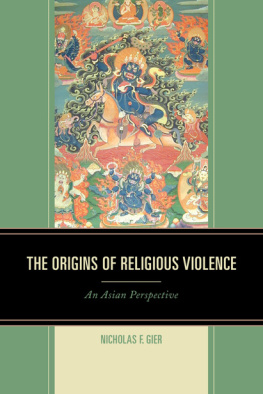
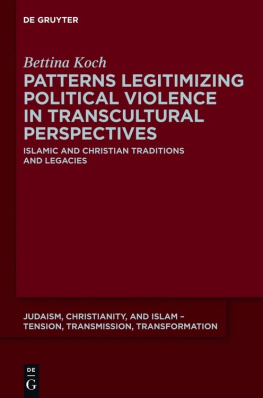
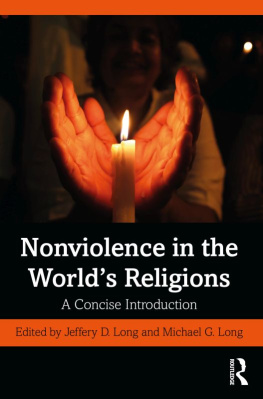
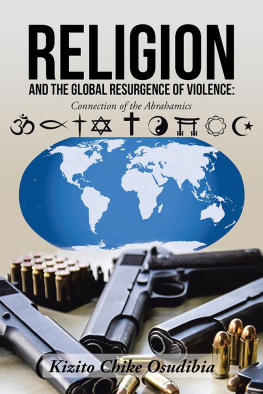
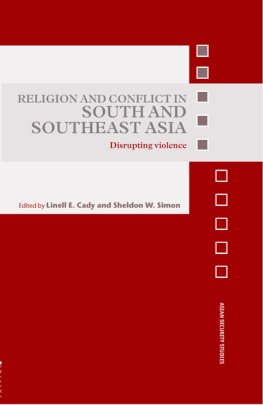
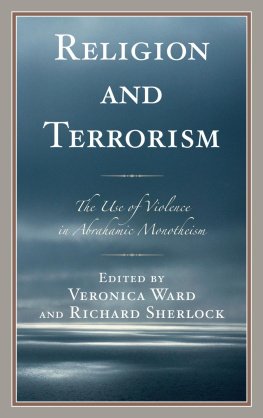




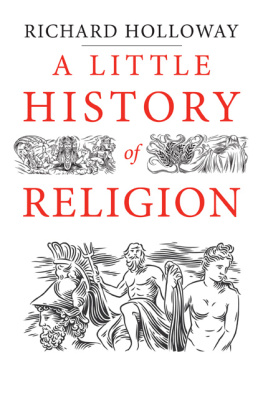
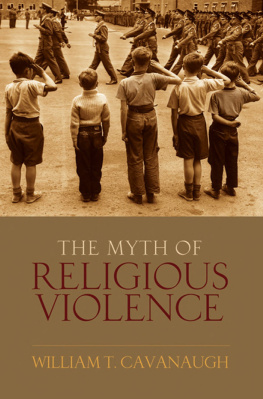
 TM The paper used in this publication meets the minimum requirements of American National Standard for Information Sciences Permanence of Paper for Printed Library Materials, ANSI/NISO Z39.48-1992.
TM The paper used in this publication meets the minimum requirements of American National Standard for Information Sciences Permanence of Paper for Printed Library Materials, ANSI/NISO Z39.48-1992.